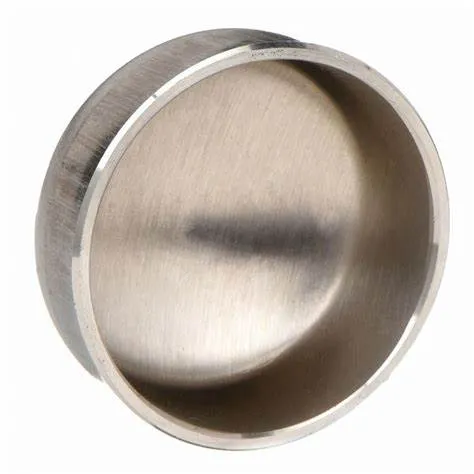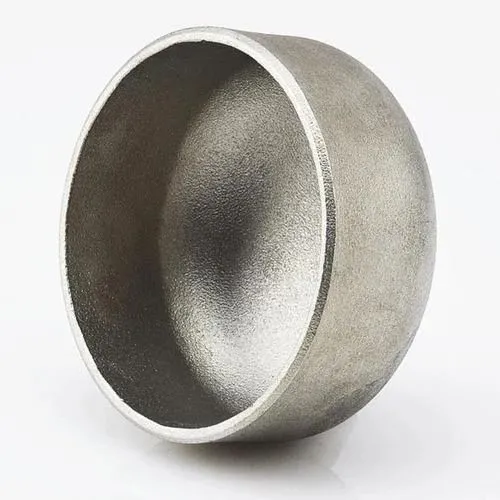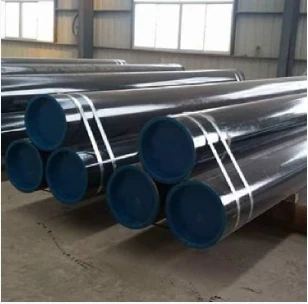JIS B2311 هڪ جاپاني صنعتي معيار آهي جيڪو بٽ ويلڊنگ پائپ جي سامان کي ڍڪيندو آهي، جنهن ۾ پائپنگ سسٽم ۾ استعمال ٿيندڙ ڪيپس شامل آهن. بٽ ويلڊنگ ڪيپ پائپ جي آخر کي بند ڪرڻ جو مقصد ڪم ڪري ٿو، رسي يا آلودگي کي روڪڻ لاءِ مهر مهيا ڪري ٿي. هتي JIS B2311 بٽ ويلڊنگ ڪيپس جو هڪ تعارف آهي:
- 1. JIS B2311 Standard:
- - JIS B2311 معيار بٽ ويلڊنگ جي سامان جي ڊيزائن، طول و عرض، مواد، پيداوار، ۽ جانچ جي ضرورتن کي بيان ڪري ٿو، بشمول ڪيپ، پائپنگ سسٽم ۾.
- - معيار انهي ڳالهه کي يقيني بڻائي ٿو ته JIS معيار جي تعميل ۾ ٺاهيل ڪيپس معيار جي معيارن سان ملن ٿيون ۽ ٻين پائپنگ اجزاء سان هم آهنگ آهن.
- 2. بٽ ويلڊنگ ڪيپ:
- - هڪ بٽ ويلڊنگ ڪيپ، JIS B2311 جي مطابق، پائپ جي پڇاڙي کي محفوظ طور تي ڍڪڻ ۽ سيل ڪرڻ لاء ٺهيل ٺهيل آهي، تحفظ فراهم ڪري ٿي ۽ پائپنگ سسٽم جي سالميت کي برقرار رکي ٿي.
- - ڪيپس انهن حالتن ۾ استعمال ڪيا ويندا آهن جتي پائپ جي آخر کي بند ڪرڻ جي ضرورت هوندي آهي، يا ته مستقل طور تي يا عارضي طور تي، رسي کي روڪڻ، آلودگي، يا سسٽم کي ختم ڪرڻ لاء.
- 3. مواد ۽ تعمير:
- - JIS B2311 وضاحتن جي تحت بٽ ويلڊنگ ڪيپس مختلف مواد ۾ موجود آهن جهڙوڪ ڪاربان اسٽيل، اسٽينلیس سٹیل، ۽ مصري اسٽيل مختلف ايپليڪيشن گهرجن کي پورو ڪرڻ لاء.
- - اهي ڪيپس معياري تعميراتي طريقن کي استعمال ڪندي ٺاهيا ويا آهن ته جيئن پائپ جي آخر تائين ويلڊ ٿيل مضبوط ۽ ليڪ فري ڪنيڪشن کي يقيني بڻائي سگهجي.
- 4. درخواست ۽ فائدا:
- - بٽ ويلڊنگ ڪيپس مختلف صنعتن ۾ ايپليڪيشنون ڳوليندا آهن، جن ۾ تيل ۽ گئس، ڪيميائي عمل، پاڻي صاف ڪرڻ وارا پلانٽ، ۽ وڌيڪ شامل آهن جتي پائپ جي آخرن کي محفوظ طور تي ڍڪڻ جي ضرورت آهي.
- - ڪيپس ماحولياتي عناصر کان پائپ جي سرن کي تحفظ فراهم ڪن ٿا، آلودگي کي روڪڻ، ۽ پائپنگ سسٽم جي صفائي ۽ سالميت کي برقرار رکڻ ۾ مدد ڪن ٿيون.
- 5. تنصيب ۽ ويلڊنگ:
- - مناسب تنصيب جا طريقا، بشمول صحيح ترتيب، پائپ جي آخر جي تياري، ۽ ويلڊنگ ٽيڪنڪ، ضروري آهن جڏهن بٽ ويلڊنگ ڪيپس کي نصب ڪيو وڃي ته جيئن تنگ ۽ لڪ پروف مهر کي يقيني بڻائي سگهجي.
- - ويلڊنگ هڪ عام طريقو آهي جيڪو پائپن سان ڪيپس کي ڳنڍڻ لاءِ، هڪ محفوظ ۽ مستقل بندش مهيا ڪري ٿو جيڪو دٻاءُ، درجه حرارت جي مختلف تبديلين، ۽ سسٽم اندر وهندڙ وهڪري کي برداشت ڪري سگهي ٿو.
- تت ۾، JIS B2311 بٽ ويلڊنگ ڪيپس اهم اجزاء آھن جيڪي پائپنگ سسٽم ۾ استعمال ٿيل آھن پائپ جي آخر کي محفوظ طور تي سيل ڪرڻ ۽ حفاظت ڪرڻ لاء. اهي ڪيپس معياري گهرجن کي يقيني بڻائڻ لاء معيار، اعتبار، ۽ مطابقت کي صنعتي ايپليڪيشنن ۾ جتي پائپ بند ڪرڻ ۽ تحفظ ضروري آهن.
What Is a Butt Welding Cap and How Is It Used in Industrial Piping?
In industrial piping systems, end-of-line sealing and branch closures require robust solutions. A butt welding cap serves as a critical component for terminating pipes securely. By providing a seamless, welded closure, this fitting maintains system integrity, prevents leaks, and supports compliance with industry standards.
What Is a Butt Welding Cap?
A butt welding cap—also called a pipe end cap or buttweld end cap—is a round fitting designed to close off the end of a pipe. It’s manufactured to match the pipe’s outer diameter and schedule, with either a hemispherical or flat face. To install, both the pipe end and cap are beveled to form a V‑groove, enabling full‑penetration, fusion welds. Common materials include carbon steel, stainless steel, nickel alloys, and other engineered grades, chosen to satisfy pressure, temperature, and corrosion‑resistance requirements.
How Is Butt Welding Cap Used in Industrial Piping?
Butt welding caps find application across oil & gas, petrochemical, power generation, water treatment, and general process industries for both permanent and temporary closures. During hydrostatic testing, technicians install caps to seal off sections of piping while monitoring for leaks. In new construction or retrofit projects, caps terminate branch lines, future tie‑in spools, or dead‑end mains until system expansion. Welders prepare each joint by cleaning and beveling surfaces, aligning the cap precisely, and executing a root pass followed by filler passes per the qualified Welding Procedure Specification (WPS). Post‑weld heat treatment and non‑destructive examination (NDE)—such as radiography or ultrasonic testing—verify weld integrity and compliance with ASME B16.9 and related standards. Additionally, temporary caps enable safe isolation during maintenance, allowing for segment testing and dewatering under regulatory protocols.
Benefits and Best Practices
Butt welding caps offer a smooth‑bore transition that minimizes flow disruption and stress concentration. Their full‑penetration welds deliver exceptional structural strength and leak resistance. To optimize performance, engineers should:
Select caps with matching material grades and wall thicknesses
Adhere to proper bevel angles and joint fit‑up tolerances
Follow qualified WPS protocols rigorously
Consider cladding or protective coatings in corrosive environments to extend service life
Regular inspection and thorough documentation ensure long‑term reliability and safe operation under demanding conditions.
Butt welding caps are indispensable components for achieving durable, leak‑proof pipe terminations in a wide range of industrial applications.
Butt Welding Cap FAQs
What is a butt welding cap?
|
What materials are commonly used?
|
What standards govern butt welding caps?
|
How are butt welding caps installed?
|
Where are butt welding caps typically used?
|
What are the advantages of threaded caps?
|
















